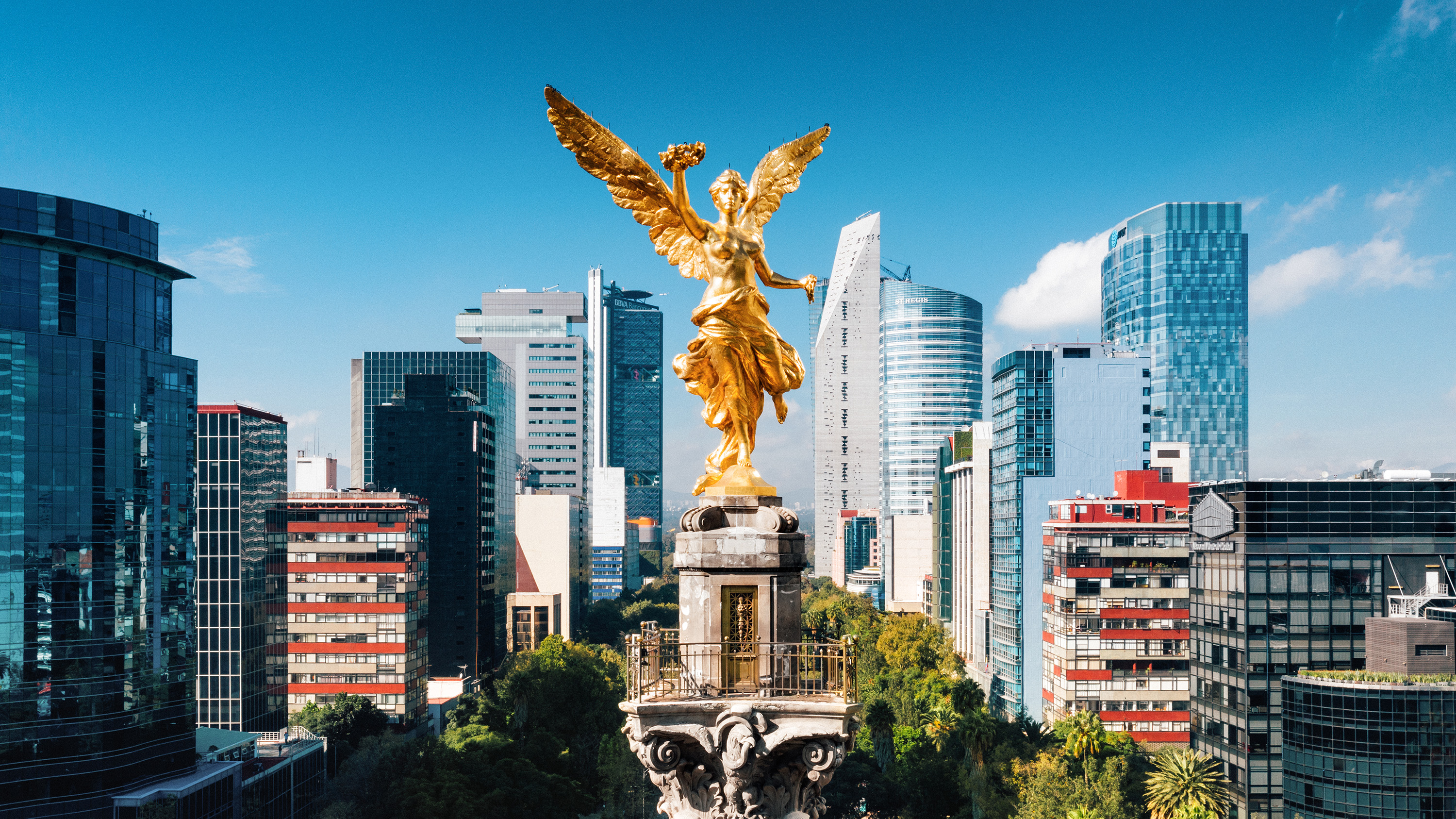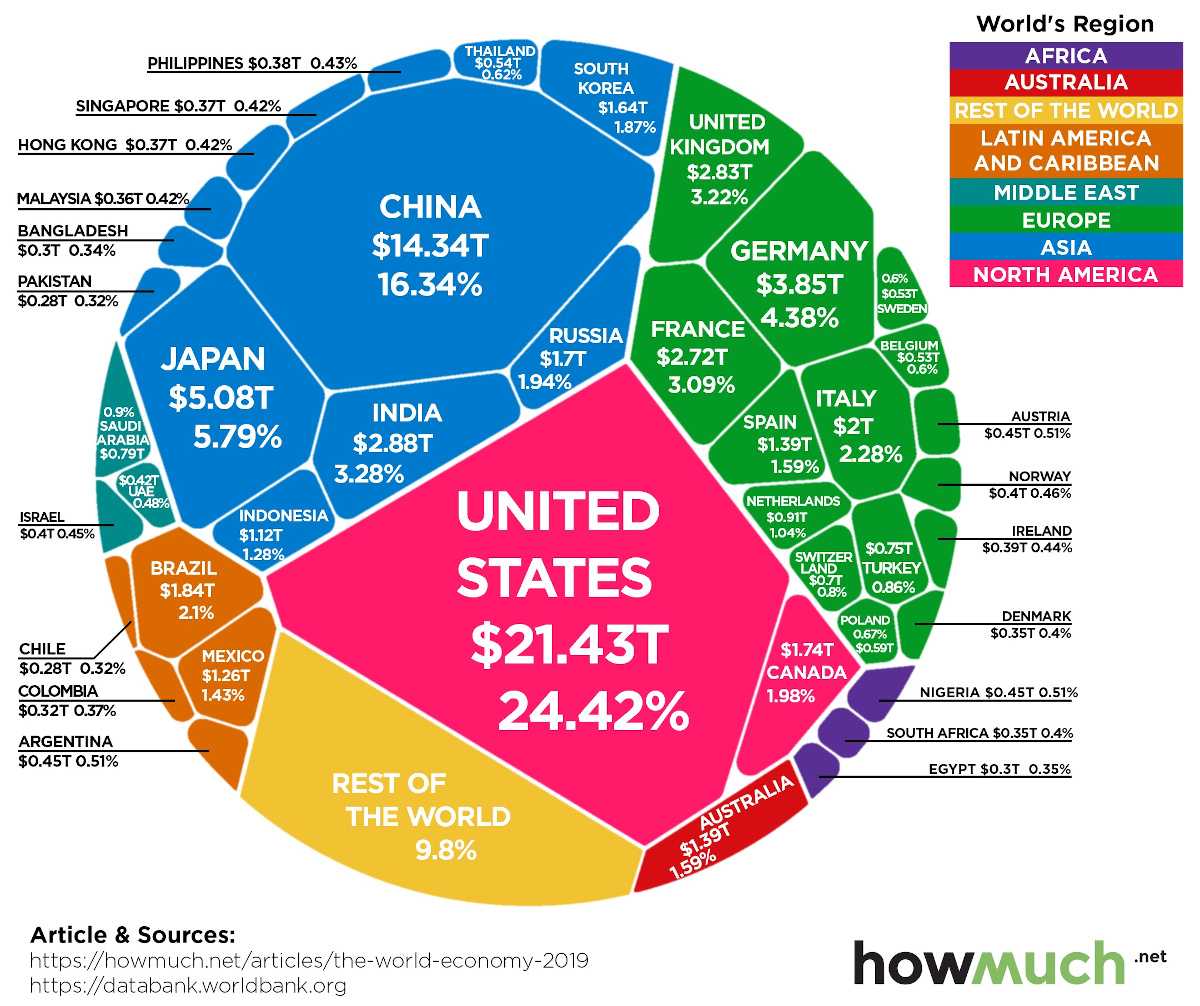Top 10 countries by GDP in 2021
United States of America
The nominal GDP for the United States is $21.44 trillion. The U.S. GDP (PPP) is also $21.44 trillion. Additionally, the United States is ranked second in the world for the approximate value of natural resources.The U.S. dollar is also the most widely used currency for global transactions. GDP was 20.49 trillion.

China
China has seen an average growth rate of 9.52% between 1989 and 2019. China is the second-largest economy considering nominal GDP, at $14.14 trillion, and the largest using GDP (PPP), which is $27.31 trillion. China is the manufacturing hub of the world. GDP was 13.4 trillion.

Japan
Japan has the third-largest economy in the world with a GDP of $5.15 trillion. Japan’s GDP (PPP) is $5.75 trillion. Japan’s economy is market-driven so businesses, production, and prices shift according to consumer demand, not governmental action. GDP was 4.97 trillion.

Germany
The German economy is the fourth-largest in the world with a GDP of $4.0 trillion. Germany has a GDP (PPP) of $4.44 trillion and a per capita GDP of $46,560, the 18th –highest in the world. Germany’s highly developed social market economy is Europe’s largest and strongest economy and has one of the most skilled workforces. GDP was 4.00 trillion.

India
India’s economy is the fifth-largest in the world with a GDP of $2.94 trillion, overtaking the UK and France in 2019 to take the fifth spot. India’s GDP (PPP) is $10.51 trillion, exceeding that of Japan and Germany. Due to India’s high population, India’s GDP per capita is $2,170. GDP was 2.94 trillion.

United Kingdom
The United Kingdom, which has a $2.83 trillion GDP, is the sixth-largest economy in the world. In terms of GDP purchasing power parity, the UK is in the ninth spot with a GDP (PPP) of The UK is ranked 23rd for GDP per capita which is $42,558. The UK is expected to fall to the seventh-largest economy by 2023 with a GDP of $3.27 trillion. GDP was 2.83 trillion.

France
France is the third-largest economy in Europe (behind Germany and the UK) and the seventh-largest economy in the world. France has a nominal GDP of $2.71 trillion. France’s GDP per capita is $42,877.56, the 19th highest in the world, and GDP (PPP) is $2.96 trillion. GDP was 2.78 trillion.

Italy
With a nominal GDP of $1.99 trillion, Italy is the eighth-largest economy in the world. In terms of GDP (PPP) Italy’s economy is worth $2.40 trillion and its per capita GDP is $34,260.34. Italy’s economy is expected to expand to $2.26 trillion by 2023. Unfortunately, Italy is experiencing a relatively high unemployment rate of 9.7% and a debt at 132% of GDP. GDP was 2.07 trillion.

Brazil
Brazil has the ninth-largest economy in the world and the largest in Latin America with a nominal GDP of $1.85 trillion. Brazil is also the largest and most populous nation in Latin America. Brazil has the world’s 73rd highest per capita GDP of $8,967 and a GDP (PPP) of $2.40 trillion. The country has an estimated $21.8 trillion in natural resources, which includes vast amounts of timber, uranium, gold, and iron. Brazil is a developing free-market economy. GDP was 1.87 trillion.

Canada
Canada has the tenth-largest economy in the world with a nominal GDP of $1.73 trillion. Canada’s per capita GDP of $46,260.71 is ranked 20th globally while its GDP (PPP) of $1.84 trillion is ranked 17th globally. Canada’s GDP is expected to rise to $2.13 trillion by 2023. Canada has the fourth-highest estimated value of natural resources of $33.2 trillion. GDP was 1.71 trillion.

Largest Economies in the world by 2050
China
To one’s surprise, China will be the most powerful economy in the world in 2050. The study authors are confident that China will remain supreme in 30 years. GDP in PPP terms by 2050 will be $58.5 trillion, Annual average growth rate by 2050 will be 2.1% and Total population by 2050 will be 1.348 billion.

India
‘India’s GDP per capita trajectory over the next 34 years is markedly different to its overall GDP progression, illustrating that while strong population growth can be a key driver of GDP growth, it can also make it more challenging to boost average income levels,’ the report explained. GDP in PPP terms by 2050 will be $44.1 trillion, Annual average growth rate by 2050 will be 3.9% and Total population by 2050 will be 1.705 billion.

United States
Despite the US near the top of OECD nations when it comes to public education spending, the results have been abysmal. Should the US and other states enhance the state of education by embracing technological change, new employment opportunities could be born. Still, it may not be enough to defeat the world’s two richest economies: India and China. GDP in PPP terms by 2050 will be $34.1 trillion, Annual average growth rate by 2050 will be 1.9% and Total population by 2050 will be 388.9 million.

Indonesia
With Indonesia attracting offshoring jobs from China, the results have already caught the eye of financial analysts worldwide. This has expanded real income growth, raised domestic demand, and improved its competitive advantage. GDP in PPP terms by 2050 will be $10.5 trillion, Annual average growth rate by 2050 will be 3.2% and Total population by 2050 will be 322.2 million.
Brazil
Brazil was listed as a market that has ‘overcome challenges and ultimately been successful in combining their global best practices with flexible adaptation to local business and consumer environments.’ GDP in PPP terms by 2050 will be $7.5 trillion, Annual average growth rate by 2050 will be 2.5% and Total population by 2050 will be 238.3 million

Russia
With the world transitioning to natural gas, experts believe that Moscow has positioned itself well when compared to other economies. Plus, as evident in recent years, Russia has been gradually diversifying its economy to ensure that it refrains from depending solely on natural resources for growth. GDP in PPP terms by 2050 will be $7.1 trillion, Annual average growth rate by 2050 will be 1.8% and Total population by 2050 will be 128.6 million.

Mexico
Over the next 30 years, Mexico could overtake the UK and France. According to the study authors, one of the areas in Mexico that could see vast improvement is the control of corruption, something that the current government has failed to rein in after all these years. GDP in PPP terms by 2050 will be $6.9 trillion, Annual average growth rate by 2050 will be 6.9% and Total population by 2050 will be 163.8 million.

Japan
Japan is in a comparable position to Germany in the sense that it’s not so much that the strength of its economy will diminish but, rather, other nations, such as Brazil and Mexico, are expected to accelerate by 2050. GDP in PPP terms by 2050 will be $6.8 trillion, Annual average growth rate by 2050 will be 1% and Total population by 2050 will be 107.4 million.

Germany
Germany will perform slightly better than its British counterpart over the next 30 years. According to analysts, it’s not so much the economic fundamentals that will impact Germany. Instead, it’s the performance relative to certain emerging markets that will place an important role in Germany making the top 10. GDP in PPP terms by 2050 will be $6.1 trillion, Annual average growth rate by 2050 will be 1.4% and Total population by 2050 will be 74.5 million.

United Kingdom
The United Kingdom would slip from 9th place to the 10th spot as the nation is overtaken by Germany. At the same time, the UK will remove France from the top 10 list, making it one of the few developed economies of today to stand the test of time. GDP in PPP terms by 2050 will be $5.4 trillion, Annual average growth rate by 2050 will be 2% and Total population by 2050 will be 75.4 million.

Comparison Between USA and India
INDIA
- India is developing into an open-market economy, yet traces of its past policies remain.
- Economic liberalization measures, including industrial deregulation, privatization of state-owned enterprises, and reduced controls on foreign trade and investment, began in the early 1990’s and have served to accelerate the country’s growth, which averaged under 7% per year since 1997.
- India’s diverse economy encompasses traditional village farming, modern agriculture, handicrafts, a wide range of modern industries, and a multitude of services.
- Slightly more than half of the work force is in agriculture, but services are the major source of economic growth, accounting for nearly two-thirds of India’s output, with less than one-third of its labor force.
- India has capitalized on its large educated English-speaking population to become a major exporter of information technology services, business outsourcing services, and software workers.
UNITED STATES OF AMERICA
- The US has the largest and most technologically powerful economy in the world, with a per capita GDP of $49,800.
- In this market-oriented economy, private individuals and business firms make most of the decisions, and the federal and state governments buy needed goods and services predominantly in the private marketplace.
- US business firms enjoy greater flexibility than their counterparts in Western Europe and Japan in decisions to expand capital plant, to lay off surplus workers, and to develop new products. At the same time, they face higher barriers to enter their rivals’ home markets than foreign firms face entering US markets.
- US firms are at or near the forefront in technological advances, especially in computers and in medical, aerospace, and military equipment; their advantage has narrowed since the end of World War II.
- The onrush of technology largely explains the gradual development of a “two-tier labor market” in which those at the bottom lack the education and the professional/technical skills of those at the top and, more and more, fail to get comparable pay raises, health insurance coverage, and other benefits.
Conclusion
As you the reached the end of the article, you must have seen how major world economies and all factors are used to measure their developments and growth accordingly.





